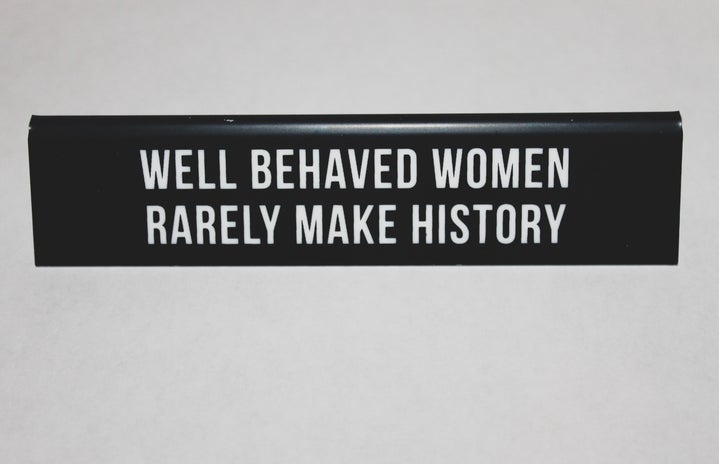Since the creation of the Women’s Movement, we have seen many waves of feminism defined by different time periods and by the very women fighting for equality. Today, the newest form of feminism is intersectional. First defined by Kimberle Crenshaw in 1989, intersectional feminism is “The view that women experience oppression in varying configurations and in varying degrees of intensity. Cultural patterns of oppression are not only interrelated but are bound together and influenced by the intersectional systems of society. Examples of this include race, gender, class, ability, and ethnicity. ” (Kimberle Crenshaw). With so much inequality and discrimination in our society, women cannot separate gender issues from other social issues.
Intersectionality refers to the way “multiple forms of discrimination overlap based on predetermined categories like gender, race, or class. For instance, the challenges that LGBT people face cannot be separated from the struggles that they have to endure also, as indigenous people, as people living in poverty, as people with disabilities, as younger or older people, as people of insecure or undocumented immigration status, as refugees or internally displaced persons, or as people of color. When we advocate for change, we must do so in ways that acknowledge these intersections” (Rowan Blanchard).
Image Courtesy of Magenta
In essence, intersectional feminists understand that the fight for women’s rights coexists with the fight for other civil and human rights. When discussing feminism, we must acknowledge that not only are men and women inherently unequal, but women among women do not share equal rights as well. For example, the white woman is paid less than the white man. However, the black woman is paid less than the white woman and a female immigrant is paid less than the black woman. Even when we are talking about gender issues, we have to look at it through a racial lens. You can not address sexism without racism and xenophobia because many people are dealing with all of these issues at the same time. We must not ignore issues facing women of color, issues facing disabled women, issues facing trans women and issues facing economically disadvantaged women. It is important to remember that the Women’s Movement does not contain a single story. Instead, it is comprised of diverse women sharing multitudes of stories – all that deserve the right to be heard.
Image Courtesy of The Ripple
Intersectionality has allowed for feminism to be more inclusive. Feminism is not one-size-fits-all or one-dimensional. In order to bring about change, feminism has to be inclusive for all people because certain groups of women have multi-layered facts in life that they have to deal with.
The feminist movement is not a movement where you can stop supporting after you got what you came for – it’s one where you fight for equality for every woman. It is important to remember that, as women, our destinies are all tied together. And our freedoms are tied. No one is free until everyone is free. Lilla Watson once said, If you have come here to help me you are wasting your time. But if you have come because your liberation is bound up with mine, then let us work together. (Lilla Watson). You can’t expect people to break themselves into little pieces. You can’t pick and choose what issues you want to talk and care about. As feminists, we must embrace our fellow women, and love them with all of their flaws. Each of us is tied together and we will never reach equity if we do not speak up for each other.
Image Courtesy of John Moore
How do you become a better intersectional feminist? The first step is acknowledging the need to address feminism in a wider lens. White, middle class, heterosexual, able-bodied, cis-gender women have to become comfortable entering uncomfortable situations and conversations. In other words, you first must acknowledge your privilege. It is often times an awkward and delicate subject to discuss. But women who were born with more privilege than others have the power to fight for equality among all women. There’s going to be conflict, ridicule, discomfort, and tears. This work requires courage, commitment, and community. You have to be a now person. You have to put your prejudices aside. We can’t only be diverse, we have to be inclusive, which means some women have to share their opportunities with other women who may not receive those same chances. We need to be uncomfortable with inequity right now.
We need to reinvent activism. To achieve the futures we want, we need to harness the collective voice. To build the future we need we need to focus on the right now. We can’t run away, we have to embrace. Intersectionality teaches us that can can’t just be tolerant, we must become accepting. All women must work together to gain the equality we deserve.
One of the best ways to embrace and understand intersectionality is speaking to others. Sharing our stories makes us a galvanized unit. Sharing our stories allows us to see how all of our stories are interconnected, while also acknowledging how diverse our problems are and how so many problems coexist and relate to each other. We need intersectionality to ensure no women remain voiceless. Intersectionality needs connection. In such a polarized political environment, we cannot feed into the rhetoric that divides us. Women do not live in silos. We are intersectional.


